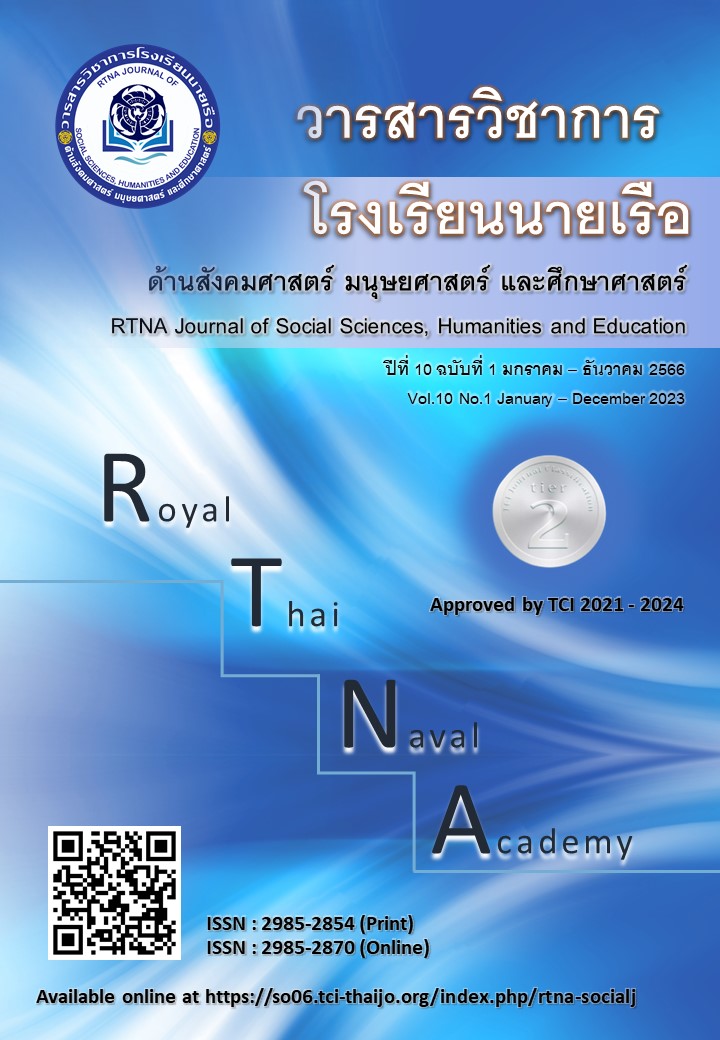Burnout among school administrators
Keywords:
Burnout at Work, School AdministratorsAbstract
The purpose of this academic article aims to study the school administrator’s burnout resulting from pressures at work and stress accumulated from having been working for a significantly long time. Burnout causes abnormal behaviors and expressions in physical and mental aspects. Some of the symptoms of burnout experienced by school administrators are 1) Emotional exhaustion, feeling helpless, and declining mental capacity; 2) Negative attitude towards work, lack of willpower, confidence and drive to success; and 3) Unable to build a good rapport with colleagues and a feeling of being distant from others. The said symptoms could further lead to depression, boredom, and discouragement, which will consequently affect the educational institution in terms of administration performance, and management of the institution personnel. While pressures and stress at work tend to be unavoidable, properly approaching and finding solutions to these issues and challenges could result in greater success in the leadership of school administrators, leading themselves and the educational institution to success.
References
กรมสุขภาพจิต. (2562). ภาวะหมดไฟในการทำงาน (burnout syndrome). สืบค้น 30 กันยายน 2565, จาก https://dmh.go.th/news/view.asp?id=2270
จิรนุช จิตราทร. (2560). ความเครียด. สืบค้น 12 กันยายน 2565, จาก https://www.rajavithi.go.th/rj/?p=16953
ชลธิชา แก้วอนุชิต. (2561). สุขภาพจิตชุมชน. กรุงเทพฯ: โอ เอส พริ้นติ๊งเฮ้าส์.
ทิพรัตน์ บำรุงพนิชถาวร. (2564). ปัจจัยที่มีความสัมพันธ์ต่อภาวะหมดไฟในการทำงานของ
ผู้ปฏิบัติงานในโรงพยาบาลชุมชน. (วิทยานิพนธ์ปริญญามหาบัณฑิต). ชลบุรี: มหาวิทยาลัยบูรพา.
ธนพร พงศ์บุญชู. (2559). อิทธิพลกำกับของภาวะผู้นำที่มีต่อความสัมพันธ์ระหว่างความเครียดในการทำงาน ภาวะหมดไฟในการทำงานและพฤติกรรมการทำงานที่เบี่ยงเบน. (วิทยานิพนธ์ปริญญามหาบัณฑิต). กรุงเทพฯ: มหาวิทยาลัยธรรมศาสตร์.
นาตยา สุวรรณจันทร์. (2560). การศึกษาความเครียดในการปฏิบัติงานของผู้บริหารสถานศึกษา สังกัดสำนักงานเขตพื้นที่การศึกษามัธยมศึกษา เขต 11. (วิทยานิพนธ์ปริญญามหาบัณฑิต). สุราษฎร์ธานี: มหาวิทยาลัยราชภัฏสุราษฎร์ธานี.
ประทุม ฤกษ์กลาง. (2554). การจัดการความเครียด เติมความสุข เพื่อประสิทธิผลในการทำงาน. วารสารนักบริหาร, 31(2), 95-101.
โรงพยาบาลราชวิถี. (2564). สัญญาณ Burnout Syndrome อาการของคน เบื่องาน หมดไฟ และวิธีจัดการ. สืบค้น 3 กันยายน 2565, จาก https://www.rajavithi.go.th/rj/?p=16953
ศรีสกุล เฉียบแหลม และเพ็ญนภา แดงด้อมยุทธ์. (2562). ภาวะหมดไฟในการทำงาน. แพทยสารทหารอากาศ, 65(2), 44-52.
ศุภรี รอดสิน. (2549). ความสัมพันธ์ระหว่างความสามารถในการเผชิญและฟันฝ่าอุปสรรคกับความเหนื่อยหน่ายจากการทำงาน: กรณีศึกษาบุคลากรสถาบันเทคโนโลยีพระจอมเกล้าพระนครเหนือ. (วิทยานิพนธ์ปริญญามหาบัณฑิต). กรุงเทพฯ: มหาวิทยาลัยธรรมศาสตร์.
Christian, K. et al. (2020). Burnout: Definition, recognition and prevention approaches, Burnout intervention training for managers and team leaders. Retrieved from https://www.bridgestoeurope.com/wp-content/uploads/2020/03/BOIT_theoretical_abstract_2705.pdf
Iwanicki, Edward F. (1983). Toward Understanding and Alleviating Teacher Burnout. Theory into Practice, 22(1), 27-32.
Juli, F. (2019). A guide to burnout. Retrieved from https://www.healthline.com/health/tips-for-identifying-and-preventing-bumnout#stages
Maslach, C. and Jackson, S.E. (1981) The Measurement of Experienced Burnout. Journal of Organizational Behavior, 2, 99-113.
Pines, A. M., Aronson, E., & Kafry, D. (1981). Burnout: From tedium to personal growth. New York: The Free Press.
Downloads
Published
Issue
Section
License
Copyright (c) 2023 Royal Thai Naval Academy

This work is licensed under a Creative Commons Attribution-NonCommercial-NoDerivatives 4.0 International License.
The author has the sole responsibility for the material published in RTNA Journal of Social Sciences, Humanities, and Education, which the editorial team may not agree on that material.
RTNA Journal of Social Sciences, Humanities, and Education owns the copyright of the text, the illustration, or other material published in the journal. No parts or the whole of the material published may be disseminated or used in any form without first obtaining written permission from the academy.






